Recently, Minister of Health Dao Hong Lan chaired a meeting of the Steering Committee on breakthroughs in science, technology, innovation, and digital transformation in healthcare.
Recently, Minister of Health Dao Hong Lan chaired a meeting of the Steering Committee on breakthroughs in science, technology, innovation, and digital transformation in healthcare.
The Minister of Health has issued an important requirement for healthcare facilities nationwide to implement electronic medical records and integrated electronic health books on the VNeID application before September 30, 2025.
This is one of the key tasks in the healthcare sector's digital transformation strategy, aiming to optimize management, improve service quality, and ensure information security in healthcare.
 |
| The Ministry of Health requires hospitals and medical facilities to use electronic health records integrated into the VNeID application, allowing people to easily access and manage their own health information. |
To achieve this goal, the Ministry of Health requires healthcare facilities to prioritize resources and urgently implement electronic medical records, while also promoting the application of information technology in healthcare management and care.
The Ministry of Health also requires hospitals and medical facilities to use electronic health records integrated into the VNeID application, allowing people to easily access and manage their own health information.
In particular, Minister Dao Hong Lan emphasized the role of leaders of medical examination and treatment facilities, requesting that leaders set an example by taking the lead in awareness, innovative thinking, and methodology regarding digital transformation.
"Leaders must provide decisive direction and remove obstacles to ensure the successful and timely implementation of electronic medical records," the Minister shared.
According to the plan, healthcare facilities will actively apply artificial intelligence (AI) and big data to disease diagnosis and treatment. The Ministry of Health also requires strengthening the connection and sharing of medical data between healthcare facilities and treatment levels, helping to improve the efficiency of medical examination and treatment and disease prevention.
Furthermore, the application of technology in cashless payment for medical services will help minimize risks, enhance convenience, and increase transparency in healthcare transactions. The Ministry of Health also requires hospitals and medical facilities to implement solutions to support the public, such as using chip-embedded citizen identity cards, biometric identification, online registration for medical examinations and treatment, and implementing telemedicine.
One of the key elements in the digital transformation of healthcare is ensuring information security and the confidentiality of patient data. The Ministry of Health requires healthcare facilities and related agencies to implement cybersecurity measures, ensuring that medical data is always managed and protected in accordance with the law.
The Ministry of Health will also strengthen regulations on cybersecurity, requiring healthcare facilities to implement data protection measures according to information security levels and closely monitor their implementation.
To ensure the smooth implementation of digital transformation in the healthcare sector, the Ministry of Health requires healthcare training institutions to urgently deploy information technology and digital transformation in their training, teaching, and learning activities.
Digital transformation content must be integrated into training programs, ensuring that healthcare professionals have sufficient skills and knowledge to operate modern technology systems in healthcare.
The Ministry of Health aims to ensure that by the end of 2025, 100% of eligible administrative procedures will be provided as online public services. Simultaneously, at least 80% of administrative procedure dossiers will be processed online, and the percentage of adults using online public services will reach 40% or more.
Hospitals and medical facilities need to complete the implementation of electronic medical records and electronic health books by September 30, 2025. This goal aims to build a modern and convenient healthcare system, while simultaneously improving the quality of medical examination and treatment, disease prevention, and meeting the growing needs of the people.
According to our investigation, many hospitals have made efforts to implement digital transformation in recent times. For example, at Bach Mai Hospital, the electronic medical record system has been implemented since November 2024. Both patients and doctors are satisfied with the convenience and speed that this system provides.
Accordingly, patients only need to scan their ID card code, basic personal information and medical history will be displayed, quickly classified, and convenient for examination.
Before entering the hospital, some people had mentally determined that they would have to wait, the medical examination and treatment procedures would take a long time, even all day, but the reality was beyond expectations. Everything was very fast and convenient, only about 2 hours from the procedure to the indications for testing and imaging procedures and finally the completed results. Almost all steps were done through digital technology .
Pay at the clinic, no need to go everywhere to pay. After the procedure, return to the clinic and the doctor can read the results on the machine. Minimize travel and lost documents.
Taking care of a relative being treated as an inpatient at the A9 Emergency Center, Bach Mai Hospital, a resident in Quang Ninh also expressed satisfaction with the experience of using electronic medical records.
According to him, all procedures as well as indications, treatment regimens, and prescriptions can be confirmed and viewed on a tablet or personal phone. At first, I was confused, but after being guided by doctors and nurses, I found it easy to use and quite convenient. Not only me, but my children can also view and monitor my mother's treatment process.
The electronic medical record system not only helps doctors quickly access patient information but also enhances communication and interaction between departments in the hospital.
This creates a conducive working environment, minimizes waiting times and reduces duplication in tests, making diagnosis and treatment more accurate and timely.
Associate Professor Dr. Nguyen Anh Tuan, Director of the A9 Emergency Center at Bach Mai Hospital, said that with the application of digital transformation to electronic medical records, administrative procedures are less time-consuming, and doctors can quickly conduct examinations.
All orders are made on the software. After the order is completed, the relevant departments receive the information, the patient only needs to move to the designated locations to be deployed. The results returned to A9 are also very fast, even before the patient returns to the clinic.
When a patient is scanned, we immediately receive the image on the Center's computer and can diagnose it. With difficult cases, we can immediately discuss and consult with multiple departments, promptly handling pathological situations that are racing against time.
If the patient needs to be transferred to the treatment department, they can simply operate the software and be immediately received with full information, instead of having to wait for hundreds of pages of paper medical records to be transferred.
It can be said that the digital transformation and electronic medical records at Bach Mai Hospital have been comprehensively applied from the stage of receiving, exploiting medical history information, triage to appointment for examination, performing indications, reading results, processing, treating diseases, payment and procedures for admission, discharge and transfer to hospital.
At Hoe Nhai General Hospital, the implementation of electronic medical records has helped the hospital save a significant amount of time and money. Dr. Ly Viet Hai, Head of the Department of Intensive Care and Anti-Poison, said that the application of electronic medical records helps us easily access test results and diagnostic images without having to print films or documents. This significantly reduces waiting time and errors.
According to Dr. Nguyen Thi Huyen Nga, Head of Pediatrics Department, with electronic medical records, doctors can quickly find patient information and update new data. This helps save time for both doctors and patients, while minimizing medical errors.
Source: https://baodautu.vn/bo-y-te-yeu-cau-tang-toc-trien-khai-benh-an-dien-tu-d254840.html




![[Photo] Explore the US Navy's USS Robert Smalls warship](/_next/image?url=https%3A%2F%2Fvphoto.vietnam.vn%2Fthumb%2F1200x675%2Fvietnam%2Fresource%2FIMAGE%2F2025%2F12%2F10%2F1765341533272_11212121-8303-jpg.webp&w=3840&q=75)

![[Photo] The captivating scenery of the fragrant maple forest in Quang Tri](/_next/image?url=https%3A%2F%2Fvphoto.vietnam.vn%2Fthumb%2F1200x675%2Fvietnam%2Fresource%2FIMAGE%2F2025%2F12%2F10%2F1765353233198_lan09046-jpg.webp&w=3840&q=75)



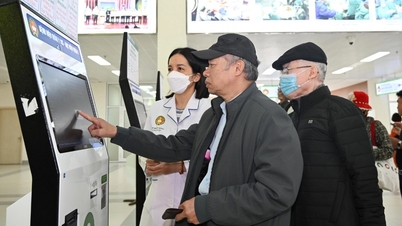





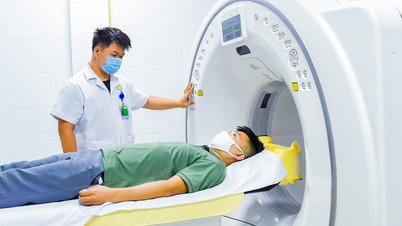





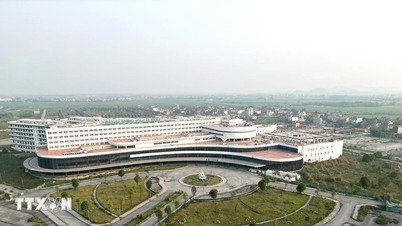











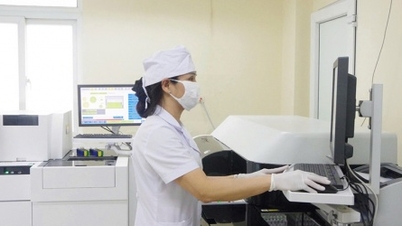





![[Video] The craft of making Dong Ho folk paintings has been inscribed by UNESCO on the List of Crafts in Need of Urgent Safeguarding.](https://vphoto.vietnam.vn/thumb/402x226/vietnam/resource/IMAGE/2025/12/10/1765350246533_tranh-dong-ho-734-jpg.webp)




















































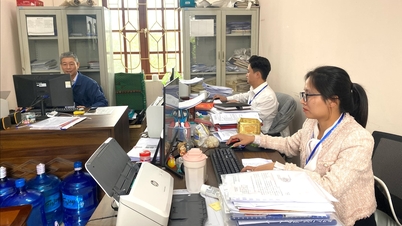




















Comment (0)